What is Brand Governance? 5 Principles for Managing Your Brand
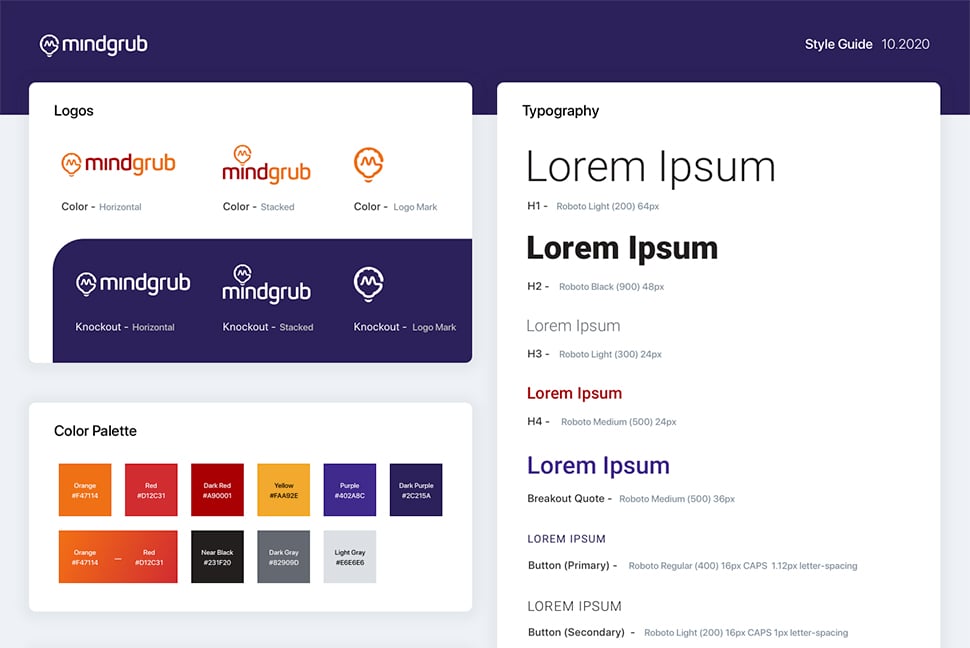
Your brand. It’s more than just a logo, colors, or a design system.
Like identity, your brand is a combination of your organization’s expressed traits and others’ perceptions of your organization. A brand is often made up of intangible elements, such as your:
- Mission → Why does your organization exist?
- Vision → Where is your organization headed?
- Values → What principles guide your organization?
- Personality → How would you define your organization’s character?
- Purpose → What is the purpose of your organization?
- Promise → What will your organization do for customers?
- Culture → What are the shared values and beliefs of your employees?
- and more
These examples from Cisco, Uber, and Urban Outfitters show how those elements can work together to form one cohesive brand.
The elements above are often defined and fleshed out by leadership and company employees, perhaps with the help of an agency. They’re the traits that you choose and that establish the foundation of a brand. Once you have those in place, you can begin to influence how others perceive your brand using design, copywriting, storytelling, and members of your organization.
Why members of your organization? Because every company employee is also a brand ambassador.
As the frontline representatives of your organization, they’re the ones building relationships with customers and with the community. Whether they work in sales, engineering, marketing, or IT, each employee has a chance to further your brand every time they are asked “So, what do you do for a living?”
When you clearly identify the values and traits that define your organization’s mission, message, and personality, make sure you share them with all employees. Create a succinct and memorable description of your brand that anyone can learn and repeat.
This is where things begin to get a little tricky. You’ve established your brand, now what?
With every individual serving as a brand ambassador, and numerous employees (plus an agency or two) creating and communicating on your brand’s behalf, how do you keep things consistent? How do you go about governing that which you have created?
You’ll want to put brand governance guidelines in place to ensure your brand is portrayed correctly, no matter the medium or messenger. Get started with these five brand governance principles.
1. Brand Custodians > Brand Police
For starters, don’t just “police” your brand. No one likes to have their hand slapped.
Instead, first work with stakeholders in your organization to identify what they need from the brand, and then figure out how to best adapt the brand to those needs. You might find that your stakeholders require things like:
- Different versions of your logo to use on branded merchandise
- Brand voice guidelines to help someone outside the marketing department write a blog post
- Icons and design elements to use in a slide show
Then, find a few people to serve as brand custodians. Brand custodians should be available to the members of your organization for consultation. You’ll catch a lot of misuse of brand assets this way, and allow fellow employees to ask for advice on how to best use them.
By making brand assets and resources available that are pre-approved by brand custodians, employees will be empowered to use them with little risk of misrepresenting the brand.
2. Accept that you won’t catch everything
Unfortunately, you won’t be able to review, approve, and catch every instance of brand misrepresentation. There is, however, a simple, proactive way to help prevent it.
Make it easy for other employees to educate themselves on the brand.
Information about your brand and its history should be readily available to everyone in your organization. New employees will be able to use the information to educate themselves on your brand, and existing employees can access it any time for a refresh. You can even share your brand guide with the public/press, so they can get their logos and messaging from you, rather than somewhere else.
We’ll dive more into the documentation to use to keep your brand accessible below.
3. Set boundaries
While every member of your organization is a representative of your brand, not everyone can or should be deciding what is or isn’t a part of your brand. Set clear boundaries that tell employees which elements of your brand they can and cannot modify.
For instance, you may not want people to make adjustments to a part of your logo, a specific color, or your typeface. Be sure to also establish what can change. Define the outlines of the playing field and let your representatives play within them.
4. Remain flexible
Not every part of your brand can be sacred! Times change and your brand identity will need to adapt to stay fresh.
Allow room to explore, expand, or remix parts of your brand. If members of your organization are happy with and committed to your brand’s values and message, they will be better equipped to know when and where the brand can be adapted in dynamic applications. For example, how might your logo adapt to being a Twitter avatar?
Knowing what elements of your brand’s identity are sacred helps set boundaries on where the brand can be evolved and where it needs to remain the same for the sake of consistency.
Keeping things fresh falls on your brand custodians. They should periodically assess what’s working and what isn’t in your brand identity kit, and make adjustments and revisions from there. Maybe you initially created a repeated pattern as part of your branding materials, but have since found that it sees little to no use in real-world applications. Don’t be afraid to take that out of your brand kit, and try out a different element in its place.
5. Document your brand
Let’s talk about brand governance documentation. There are several ways to organize and make accessible all of the elements that make up your brand, including brand guides, style guides, and design systems.
Brand Guides
What is it: A document that provides high-level, abstract guidance on the strategy behind the brand, and may span several incarnations of a brand’s visual style. Coca-Cola, for example, may refresh its brand identity periodically, but the brand’s values and message will generally stay consistent.
Style Guides
What it is: a document that provides general guidance on how to represent your brand visually and tonally through design and voice. Organizations may have several brand styles throughout their lifetimes and may have separate guidelines for specific products or services as well.
Design Systems
What it is: for websites and applications, a design system is an established set of visual elements and conventions that have been crafted to embody your organization’s brand, and how to use them in a very tactical way.
Here’s an example of a design system we documented for our client, Ciena.
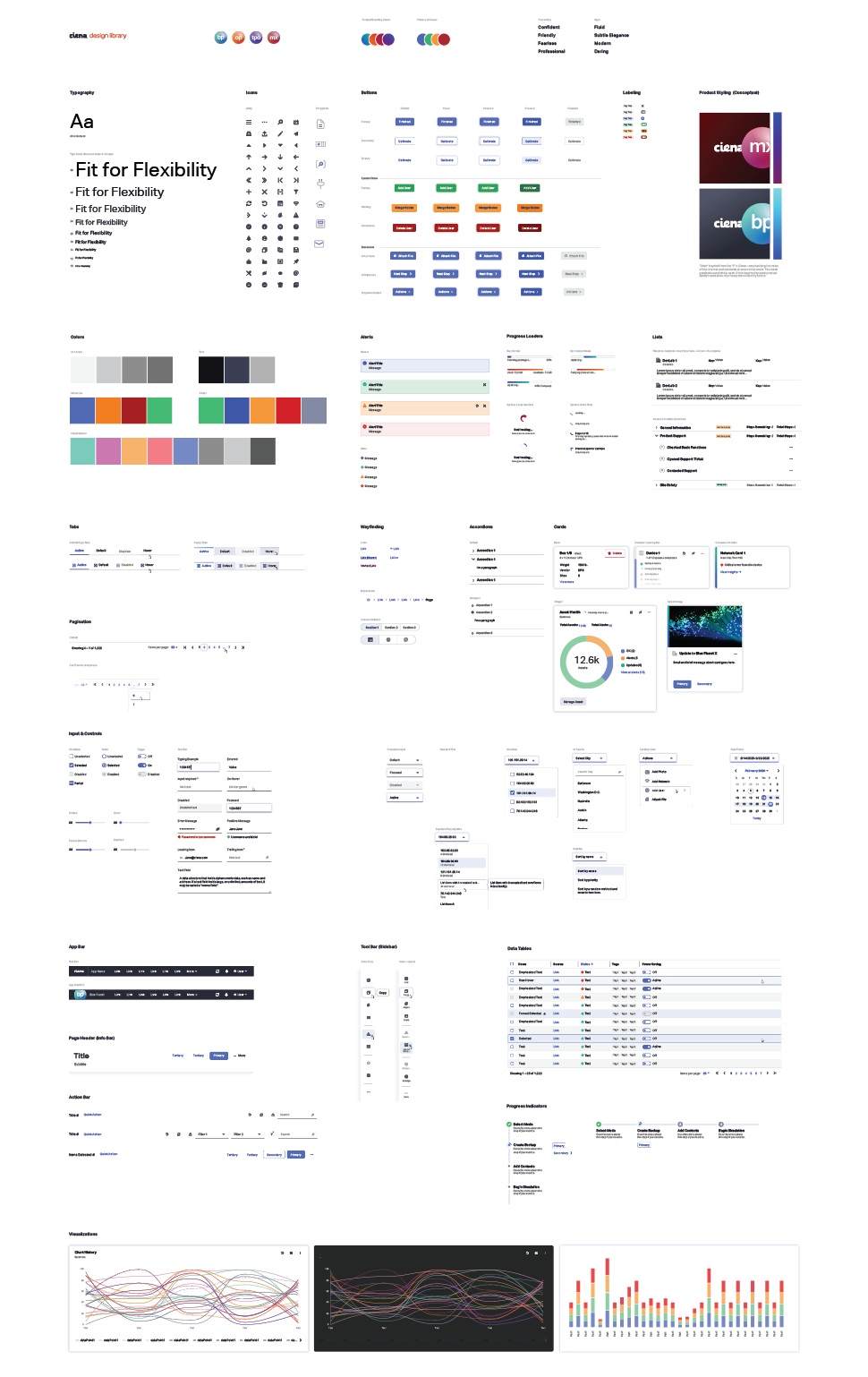
Atomic design system
What is it: an approach to a design system that focuses on the smallest elements (like fonts and buttons) and the rules governing how they can be combined into components and finally complete interfaces. It ensures a design system is internally consistent—keeping both design and code clean and scalable. Atomic thinking should be at the foundation of any good design system and allows for future changes to cascade gracefully throughout the entire system.
Here’s an example of an atomic design system we created for one of our clients in the utility space. Notice how it’s broken down into small, medium, and large elements - atoms, molecules, and organisms.
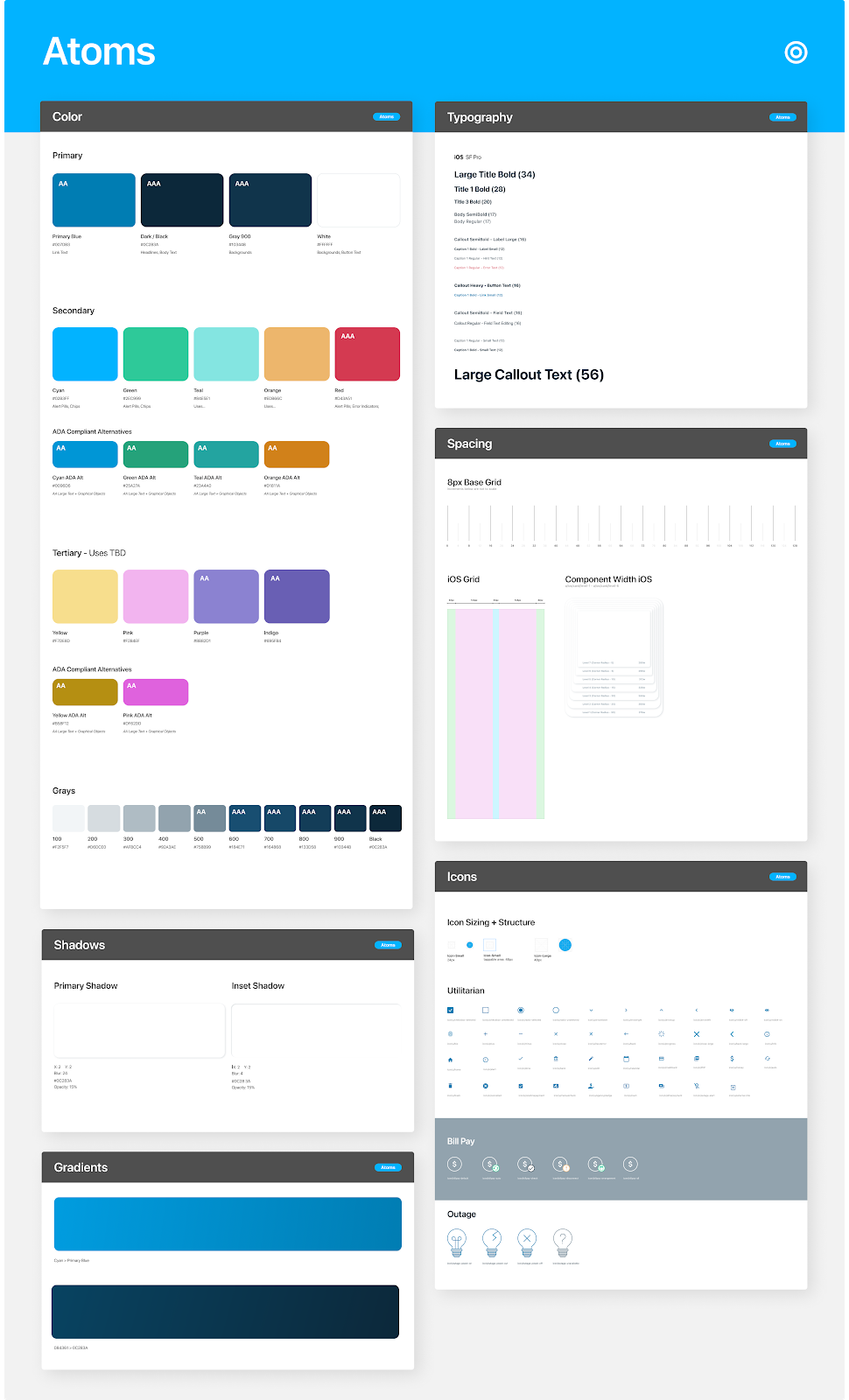
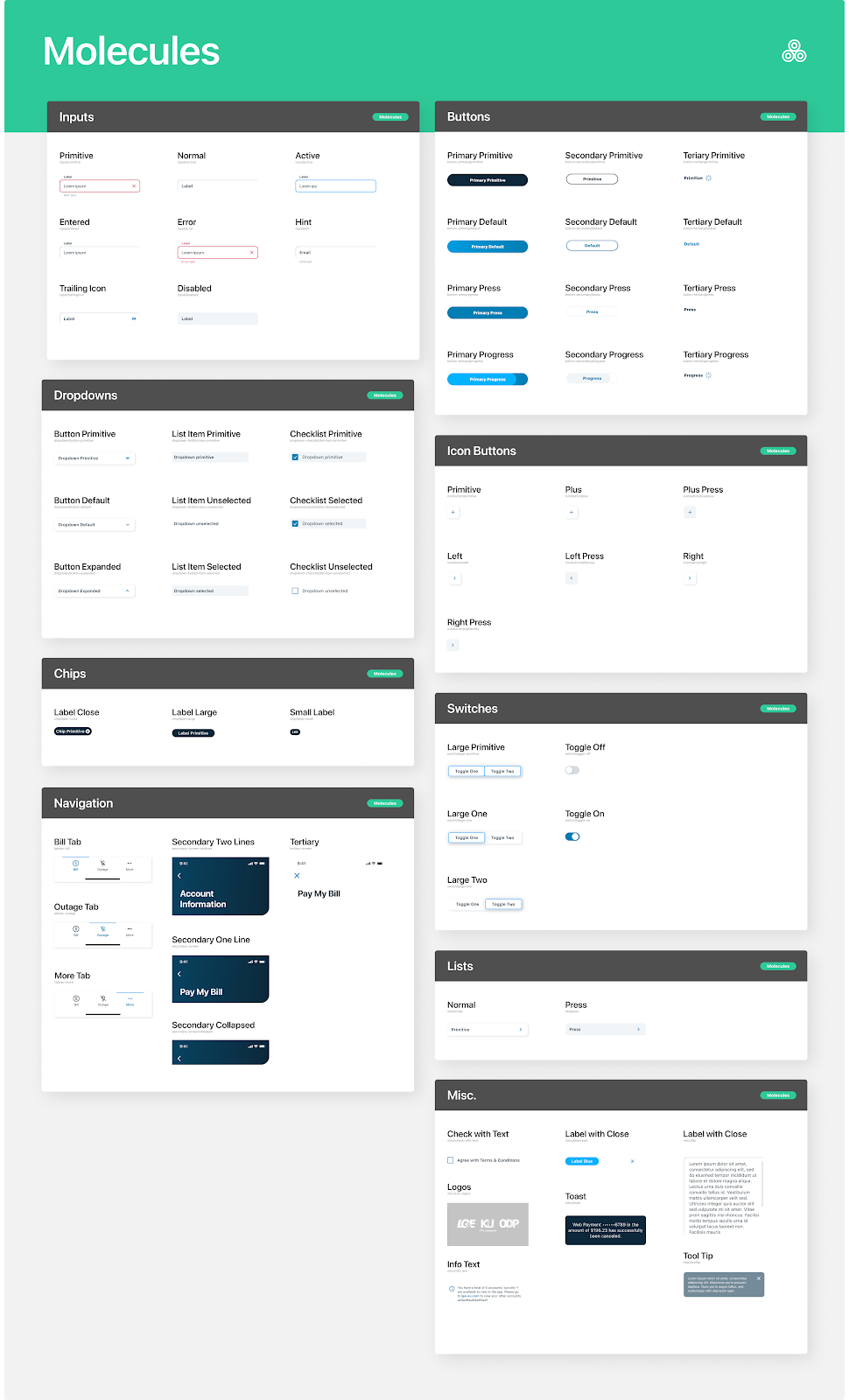
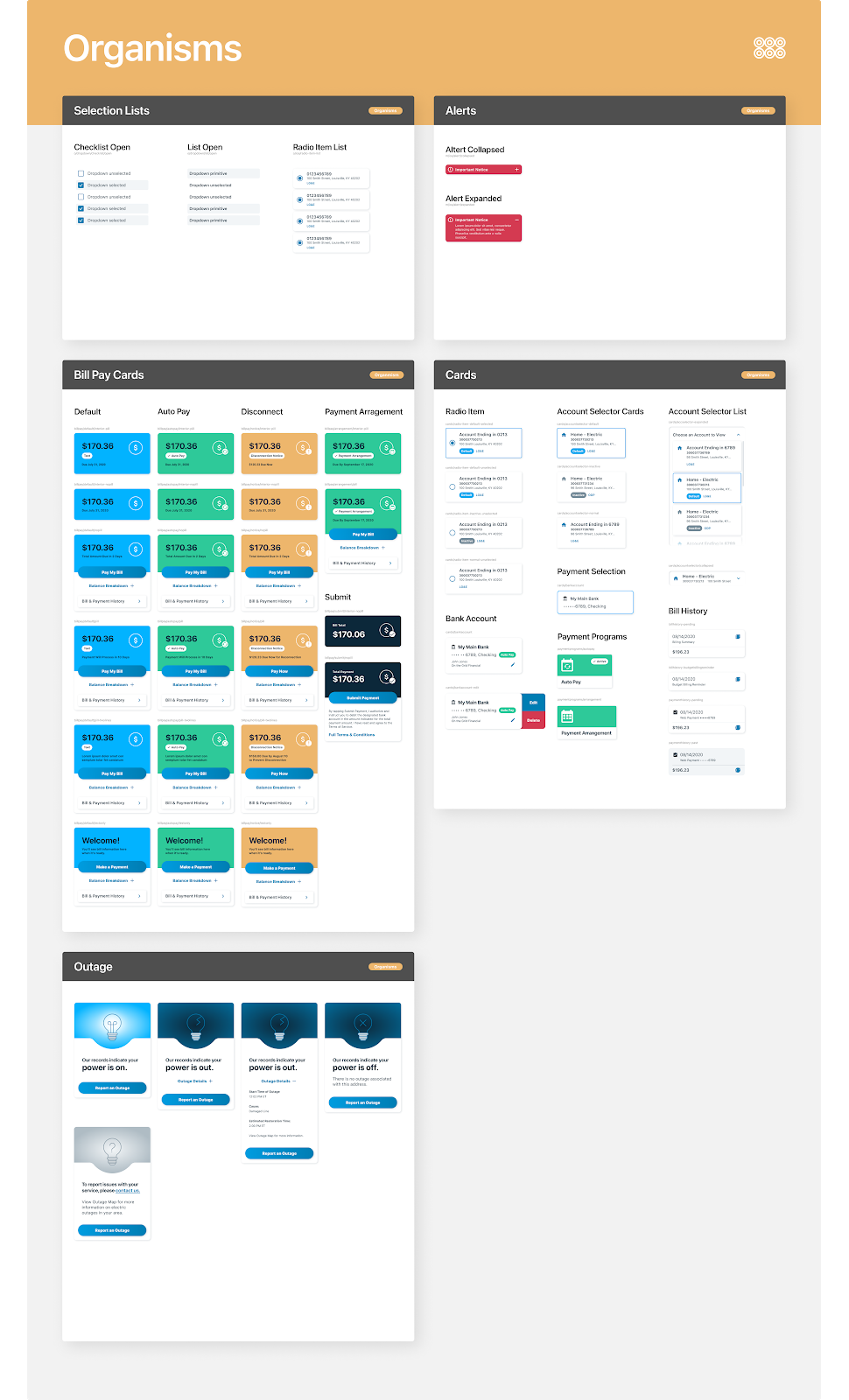
Component libraries
What is it: Perhaps the most technical sort of documentation, a component library attaches concrete code examples and API documentation to an atomic design system so that engineers can build products that can live comfortably within a brand ecosystem.
To recap
Use these five principles to establish your brand governance framework:
- Nominate a few people to act as brand custodians.
- Make brand documentation easily accessible to employees and members of the public as needed.
- Let employees know which elements are sacred and which they can modify.
- Allow room for your brand to evolve.
- Create brand documentation.
Once you have your framework established, share it! Making everything available in one location, along with images and other assets related to your brand, is an excellent way to ensure that your organization has an authoritative, one-stop source of brand truth for both internal and external parties.
Wondering if you should establish a brand guide and create a design system to accompany your digital assets? Reach out to our design team.



